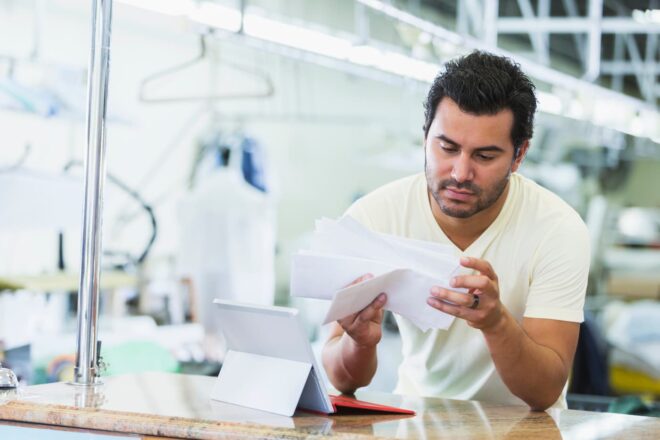How much does it cost to open a restaurant?
Editorial Team
9 min read
Thinking about opening a restaurant? Becoming a restaurateur can be an incredible experience. It all comes down to how prepared you are for the realities of being a business owner and the strength of the support system you put together before opening day.
In this guide, we’ll review the some of the most common costs of opening a restaurant, including ballpark estimates, explanations of factors that could affect those estimates, and some ways you can save money along the way.
The average cost of starting a restaurant
How much does it cost to open a restaurant? The truth is that there is no concrete answer to that question. Restaurant startup costs can differ dramatically depending on a range of factors, including:
- The needs/style of your restaurant (mostly relating back to your concept)
- Location
- Size
- Inventory and equipment
- Whether you’re using an existing venue or building a new one
Generally, you can expect to spend $175,500 to $750,500 launching your restaurant. Another way to estimate costs is to plan on spending $200-$500 per square foot.
Key financial considerations for starting a restaurant
While researching the average cost to start a restaurant and how that might impact your bottom line, it’s important to consider all the factors that go into creating an accurate estimate.
Location
The location you choose for your future restaurant could be one of the most important decisions you make during the planning process. Your restaurant’s location determines its visibility; whether you’ll pay a premium for prime real estate; how accessible it is to foot traffic; whether it’s easy for guests to park; and whether you’ll be surrounded by competitors or positioned to cater to an underserved area.
Typically, you have three options to choose from when selecting a location:
- Build a new venue from the ground up
- Purchase or lease an existing location that’s already outfitted for restaurant service
- Convert an existing space into a restaurant
The cost to build a restaurant from the ground up can be expensive, but you have complete control over the results. Purchasing or leasing an existing restaurant location is likely the most affordable route, but you’re locked into the previous owner’s floorplan, which could affect your success. Converting an existing building into a restaurant and kitchen space can be a good compromise.
READ: How to find a good location for your business
Licenses and permits
Every restaurant is required to have certain licenses and permits in place before owners are allowed to open their doors. However, the exact list of required documentation varies by state/municipality.
The licenses and permits needed to open a restaurant usually include some combination of the following:
- Business license
- Certificate of occupancy
- Food service license
- Food handler’s permit
- Building health permit
- Sign permits
- Seller’s permit
- Resale permit
- Food vendor license
- Liquor license
- Dumpster permit
- Entertainment license
All licenses and permits cost money. Some might incur a one-time fee, while others need to be renewed regularly. Check with your state and city municipalities for requirements and costs.
Equipment
There are two big considerations when it comes to equipment.
The first consideration is the type of restaurant you’re creating. Will you need grills? Fryers? One or two walk-in fridges? The type of cuisine on your menu should help determine the equipment you need to order, as will the amount of prep work you intend to accomplish onsite versus what you’ll order ready-to-serve.
The second consideration is whether you’re buying a location that’s already in service as a restaurant or if you’re outfitting an entirely new space. Audit existing restaurant spaces before committing to a lease or purchase. Some may have equipment that’s outdated or already malfunctioning; replacement costs could significantly affect your budget.
Interior design and furniture
Wall color, décor, lighting, chair height, booth seating vs. free-moving tables and chairs – every aspect of your interior design can impact the functionality and aesthetic of your restaurant. For instance, red, orange, and yellow accents can help stimulate diners’ appetites. Strategic accent light can help draw guests’ attention away from operational details and toward “wow factors” such as artwork and food displays.
Restaurant owners must balance their vision with optimal functionality – all within their prescribed budget. You may love designer chairs, but at $100 per chair, do you get a significantly higher benefit than a similar chair at half the price?
In addition to the form vs. function debate, also consider the potential staying power of your design choices. Anything trendy could need to be replaced within a year or two, while investing in classic pieces can be a safer bet, financially speaking.
Exterior enhancements
You’ll likely want to echo your interior design choices outside your restaurant to create a cohesive experience for diners. There are extra costs associated with exterior enhancements, such as outside finishes, patios, dining terraces, exterior signage, and upgraded landscaping. Certain additions – such as sidewalk dining or a deck – may also require separate licenses and permits, adding to the paperwork and fees listed above.
Marketing
Most startups launch without an existing customer base. To draw the attention of customers, you’ll need to spend money to make money. Developing a marketing strategy and paying for email blasts, direct mail, digital ads, and so on can help generate interest and increase your restaurant’s visibility.
Marketing costs vary depending on the complexity of your strategy and your intended reach. Prioritizing low-cost marketing methods might help keep expenses to a minimum. Such methods can include: local SEO services; hashtags; email marketing; features in community newspapers; blogging; social media campaigns; and cross-promotional endeavors in partnership with other businesses. Buying TV spots, working with high-profile influencers, and paying for search engine ads tend to cost a lot more.
Utilities
Utility costs can be difficult to estimate because they change according to your geographic area and other factors, such as appliance efficiency, idle time, fluctuations in demand, fuel costs, and seasonality. Expect to pay for gas, water, electricity, and trash pickup at a minimum.
Utilities can be estimated based on facility size, but you should also know that restaurants typically use five to seven times more energy per square foot than other commercial enterprises housed in similarly sized buildings because of increased electricity usage for refrigeration, lighting, and cooling.
Technology
In today’s highly connected world, restaurants rely on technology to stay competitive, serve guests in a timely manner, multiply revenue streams through curbside pickup and delivery, and achieve operational success. POS systems can help with everything from organizing customer orders to staff scheduling to generating and analyzing profit and loss reports.
The right software and equipment can help enhance the customer experience and improve efficiency. Accordingly, your estimate for tech expenditures should include everything from POS stations and mobile devices used tableside to accounting programs and third-party ordering platforms.
Food costs
One of the last steps before opening your restaurant is purchasing your perishables. This includes produce, meat, pantry items, spices, and beverages.
Over time, you’ll learn how to calculate food costs in relation to food sales, as the two numbers are closely connected. However, when you’re preparing for launch, food costs can feel isolated. You’re basically guessing how much you’ll sell of certain items — and therefore how much you need to buy — based on estimates of how busy your first week will be. This is one reason so many restaurants do a soft opening with a limited menu before moving to a full launch and expanding their culinary offerings.
Capital & contingency funding
Opening a restaurant can be an exciting venture, but success can take time. Even if you’re immediately popular and generating sales from day one, it’s still wise to have six months’ worth of capital and contingency funding stowed away for a rainy day. That rainy day could be literal – a slew of bad weather days or a natural disaster could keep potential customers from dining out – or you could encounter unexpected operational costs that exceed your revenue.
Staffing
Who’s going to run your restaurant? You need people to cook, run food, wait on guests, make drinks, seat customers, clean the restaurant after hours, and take care of all the other important tasks that keep you operational. Monthly payroll expenses tend to grow as you bring in more business and hire more people to answer rising demand.
Fine-tuning your approach to sourcing and hiring employees can help minimize payroll costs by making it easier to attract and retain top talent. Experienced, motivated staff members are generally better equipped to create stellar guest experiences, upsell items, and inspire repeat visits.
Setting up a business bank account
Your professional income and expenses should always be tracked, processed, and held separate from your personal income and expenses. Accordingly, the next big question after “How much money do you need to start a restaurant?” should be “how do you open a business bank account?”
Having a business bank account should allow you to set up a merchant account and take debit and credit card payments. You’ll appear more legitimate to your suppliers, and you’ll have better access to lines of credit if you need to take out a business loan or want to apply for a credit card in your business’s name.
One of the biggest benefits of a dedicated bank account for your restaurant is that it helps make filing your taxes much easier. You’ll have a separate tax ID for your business, and you can pull up all your transactions without worrying about business expenses accidentally co-mingling with purchases and income from other areas of your life.
You have what it takes!
The cost to open a restaurant can vary enormously based on everything from the type of restaurant you want to open to where your ideal building is located to the choices you make regarding your interior design, menu, and staffing. However, we hope we gave you a good overview of the information you need to help launch your restaurant.
For more help understanding restaurant costs and information on how Clover can help you accept payments, track sales, and create unforgettable customer experiences, chat with a Clover Business Consultant today.
CONTACT SALESThis information is provided for informational purposes only and should not be construed as legal, financial, or tax advice. Readers should contact their attorneys, financial advisors, or tax professionals to obtain advice with respect to any particular matter.
Related Posts
How to start a dry cleaning business
Build your business by tapping into your community
Popular Topics
Stay in touch
Sign up and learn more about Clover.
Thank you for your subscription!
More posts about starting a small business
eBook





